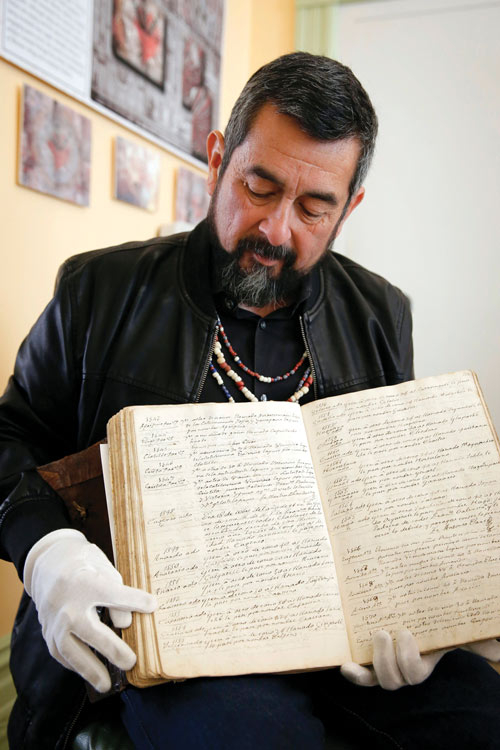Our Patron Saint
St. Junípero Serra fought to protect my ancestors — and bring them the Gospel of Jesus Christ
Junípero Serra did not become a saint because he founded missions in California. He was named a saint because he lived a holy life, and he did so while stuck in a corrupt institution known as Spanish colonialism.
To get a true sense of Father Serra, I always tell people to go back to his writings and see how he described the Indians. He was in love with the native peoples; there’s no other way to put it. And he saw the faith as the greatest good he could give them.
Serra fought to protect my ancestors from the military governors. Four military presidios had missions attached to them — Santa Barbara, San Diego, Monterey and San Francisco — and if you look at the map, the presidios are 4 or 5 miles away from the missions. That was by Serra’s design to protect the native women from the military men who were violating them.
Father Serra also advocated for self-rule at the missions. He established what was known as the alcalde role: He would have the native peoples select their own mayor from among their population, to negotiate with the padres and with the military leaders what would happen to the native peoples as a community. That was unheard of in other parts of the continent at that time. At the time of Serra’s death, the Carmel Indians were weeping because they knew they were losing their protector, and he was remembered as “el santo” — the saint.
So, when people accuse Father Serra of all kinds of horrors, I ask them, “What are your sources? Have you read how he described the Indians of California?” Some wonderful biographies were written just before Father Serra’s canonization based on new scholarship, which is not romantic but simply tells the truth about Junípero Serra.
If Father Serra could visit the missions today, he would be out there ringing that same old bell, begging the Indians to come to receive the message of Jesus Christ. This is the opportunity of every California mission today — to ring the bells and invite the native people in.
— Andrew A. Galvan, a descendant of the Ohlone, Bay Miwok, Plains Miwok and Patwin Indians, is curator at Mission Dolores in San Francisco. He also served on the board of directors of Serra’s cause for canonization.
Article from http://www.kofc.org/en/news-room/columbia/2020/september/defending-st-junipero-serra.html.
Accessed April 7, 2021.

